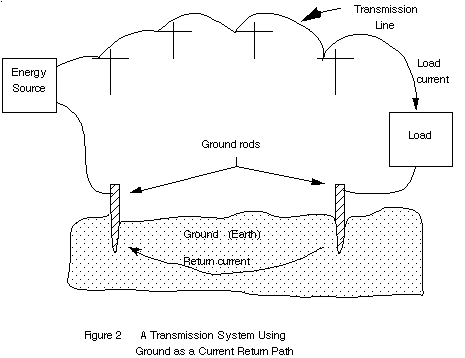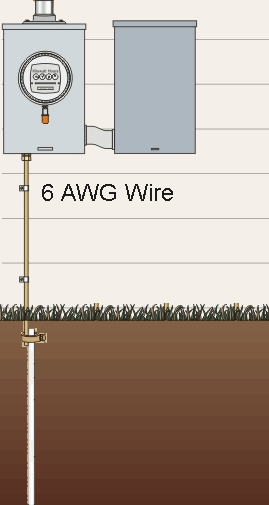Earth Ground
A true earth ground, in common electrical terminology and as defined by the National Electrical Code, physically consists of a conductive pipe or rod driven into the earth to a minimum depth of 8 feet.
A house ground is easy to find, all you have to do is look outside at the power feed coming in, there should be a thick bare wire coming down the side of the structure that attaches to either a steel pipe or a thick rod, driven into the ground. The neutral is tied to earth ground for lightning protection and to provide a path for any high voltage leakage from the power company's step down transformer. The ground is tied to the neutral to provide a return path to trip the breaker in the event of a fault. The main breaker box should be the only point where neutral/ground need to be connected, never at the outlets or other places in the electrical system.
Install Residential Grounding Rod
Grounding rods are driven into the earth to a depth of at least 8 feet. If rock is hit at less than 8 feet, the grounding rod can be driven at an angle but the angle cannot exceed 45 degrees. A grounding rod can also be buried on top of rock in a trench that is 2 1/2 feet deep and 8 feet long. Ground clamps hold the ground conductor and the grounding rod together without losing conductivity when exposed to weather and movement. When the resistance of a single ground rod exceeds 25 ohms, an additional ground rod installed not less than 6 feet away is required.

